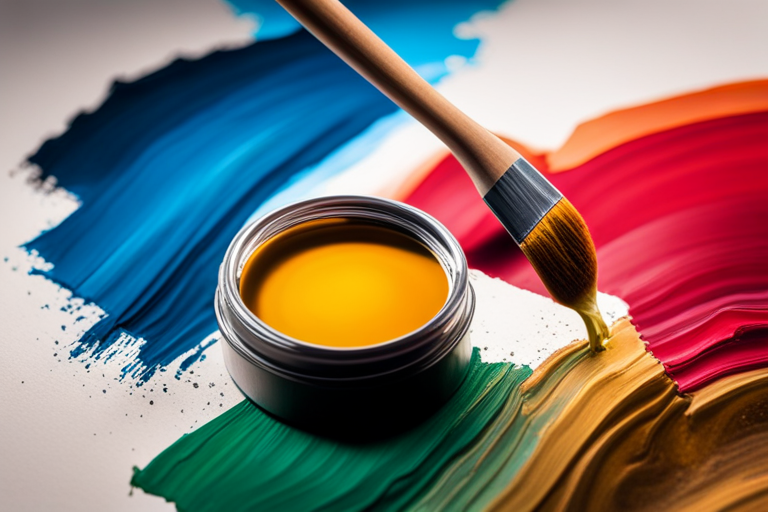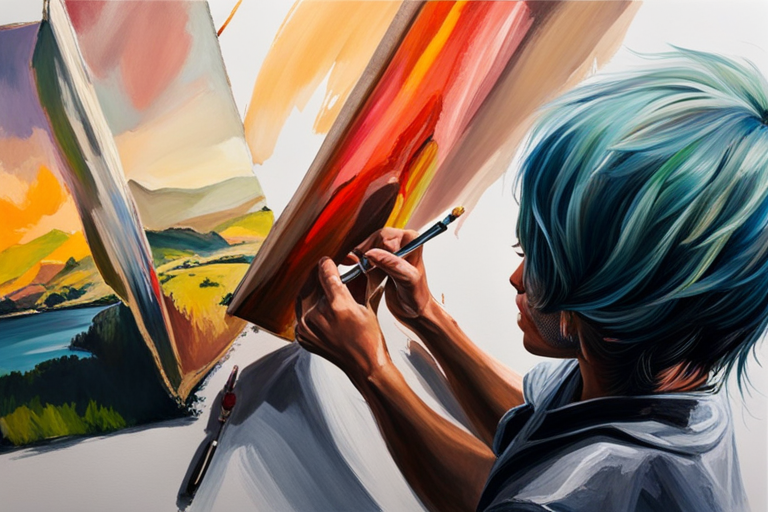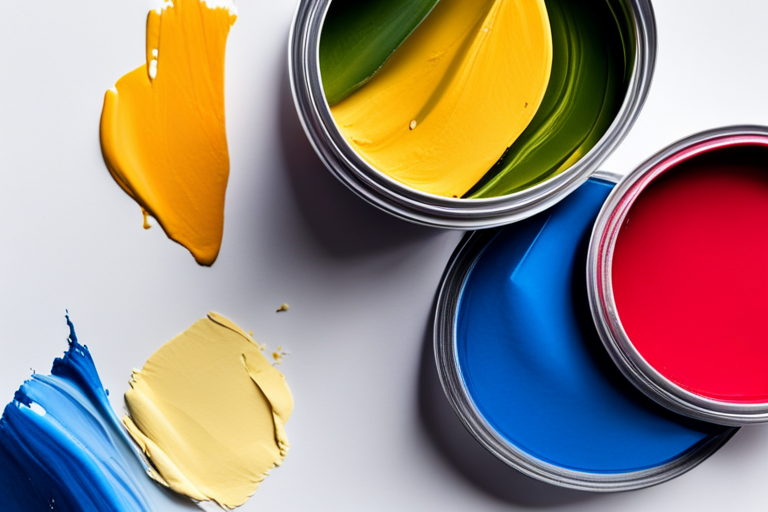The world of art never fails to provide new challenges and exciting mediums for artists to explore. One such challenge is painting on clay. Due to its porous and absorbent nature, painting on clay can be quite tricky. However, with the right medium and techniques, it can be a rewarding experience. Gouache, a water-based paint that is opaque and dries quickly, makes painting on clay a breeze. This blog post will explore the possibilities of using gouache on clay and how it can help artists create vibrant and durable designs.
Painting clay can be challenging due to the porous, absorbent nature of clay
Painting on clay can be a challenge for artists because of the material’s absorbent and porous nature. Unlike on canvas or paper, painting on clay requires a different approach and technique to get a desired outcome. Clay can soak up paint in an instant, leading to uneven textures and dull pigments. It is easy to get frustrated with such an unforgiving surface, but there are some solutions to make the process smoother.
One of the biggest problems with painting on clay is that the paint can easily seep into the material, making it look faded and less vibrant. This can be especially frustrating when trying to achieve precise and bold detailing. It is important to account for this while choosing a painting medium, and note that some may work better than others for painting on clay.
Another issue artists face when painting on clay is a lack of texture. Clay is porous and absorbs paint easily, which means that it can be tough to get an even surface. Trying to cover up the natural textures of clay can result in a disappointing finish. Before beginning to paint on clay, one should keep in mind that it is an organic material that should be incorporated into the artwork.
Fortunately, there is a solution to these common problems; gouache. This medium is ideal for painting on clay due to its opaque nature, which allows for good coverage and bold, bright pigments. Gouache is also mixable, making it easy to create custom colours and blends. Lastly, it dries quickly, which eliminates the possibility of smudging and allows for quick adjustments.
There is no problem with painting on clay, although it may seem challenging at first. By keeping the nature of the material in mind and choosing the right painting medium, creating art on clay can lead to unique and beautiful outcomes. Gouache offers a great alternative for painting on clay, making the process smoother and more effective. So, next time you are painting on clay, consider using gouache for optimal results.
Gouache is an ideal medium for painting clay because it is opaque, mixable, and dries quickly
Clay, a versatile material used for various artistic and practical purposes, can be a challenging surface to paint due to its porous and absorbent nature. Painting on porous surfaces can be frustrating because the paint seeps into the clay and often results in a patchy appearance. That’s where the medium of gouache comes in handy. Gouache is an opaque water-based paint that contains a high concentration of pigment, water, and a binder. It is a perfect medium for painting on clay because it is versatile, mixable, and dries quickly.
One of the best things about using gouache is that it is incredibly opaque. This means that it can cover even the darkest surfaces and provides an excellent base layer for any painting. When applied to clay, the gouache sticks well to the surface, providing a smooth, even, and matte finish. Moreover, gouache is very mixable, which makes it easy to create different shades of colors. Since clay can have an uneven surface, it’s essential to use the right consistency of paint to achieve a harmonious result. With gouache, you can easily thin the paint with water, making it less opaque and more spreadable if needed.
Another advantage of gouache is that it dries quickly. When painting on clay, it’s important to use a medium that dries quickly to prevent the paint from smudging or rubbing off. Gouache dries faster than oil and acrylic paints, which gives you more control over the final outcome of the painting. Additionally, gouache can serve as a base layer for other paints and mediums since it won’t interfere with the adhesion of the other materials.
As a result, gouache is a perfect medium for painting clay owing to its versatility, mixability, and fast drying time. It’s an opaque paint that covers well and provides a smooth and even base layer. Plus, it’s easy to mix and thin, which gives you more control over your painting. So, if you’re looking to paint on clay and are facing challenges due to its porous nature, give gouache a try, and see how it enhances your artwork.
Using gouache on clay allows for more creative possibilities
Gouache on clay is a fantastic medium for artists looking to explore their creativity. Unlike traditional clay pieces which are typically left uncolored or glazed, using gouache on clay offers a wide range of possibilities for creating vibrant color combinations, unique textured effects, and durable designs. In this post, we’ll explore the benefits of using gouache on clay, as well as some key factors to consider when working with this medium.
One of the most significant benefits of using gouache on clay is the ability to create unique and vibrant color combinations. Unlike traditional glazes, which can limit your color choices and often result in a glossy finish, gouache offers a wide range of color possibilities and a matte finish. This creates a look that is both striking and sophisticated, allowing you to add a pop of color to any project.
Another benefit of using gouache on clay is the ability to create unique textured effects. The sponge-like texture of the clay absorbs the paint in a way that allows for an endless variety of textures and patterns. This makes it easy to create a personalized look that’s tailored to your specific artistic style.
Finally, using gouache on clay is a great way to create durable designs that will stand the test of time. Because the paint is absorbed into the clay instead of sitting on the surface, it’s less likely to chip, fade, or crack over time. This makes it ideal for both decorative and functional objects that are intended to be used and enjoyed for years to come.
Key factors to consider when working with gouache on clay include the type of clay you’re using, the type and quality of gouache paint, and your application technique. It’s important to choose a high-quality gouache paint that’s water-soluble and dries quickly to avoid smudging or smearing. Additionally, it’s important to experiment with different application techniques to find the one that works best for you, whether that’s using a brush, sponge, or other tool.
A great way to explore your creativity and create unique and beautiful pieces that are both stylish and practical is using gouache on clay. With the right materials, tools, and techniques, the possibilities are truly endless!
Conclusion
Since clay is porous, painting on it without the right medium is quite challenging. Gouache is a good choice for painting clay since the material is not only easy to paint on but also highly recommended. However, gouache offers a solution to this problem because of its opaque nature, mixability, and quick-drying properties. Additionally, using gouache on clay allows for endless creative possibilities, such as creating vibrant color combinations unique textured effects. With this in mind, if you’re looking to paint on clay, gouache is an ideal medium that will help you achieve your desired outcome.



Leave a Reply